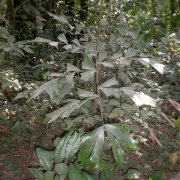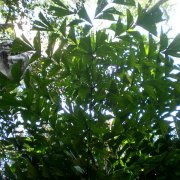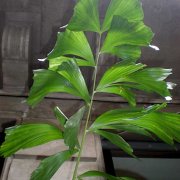Care of the palm tree Caryota mitis or Fishtail palm |
|
The genus Caryota, family Arecaceae, includes 13 species of palm trees native to tropical regions of Asia and Oceania. Some species are: Caryota mitis, Caryota urens, Caryota maxima, Caryota zebrina, Caryota bacsonensis. Common names: Fishtail palm, Clustering fishtail palm. This species is native to Tropical Asia. They are curious palm trees that reach 12 meters (39.37 feet) in height outdoors and 3 meters (9.84 feet) indoors in a pot. The characteristic fishtail leaves appear at the end of the stems, are glossy dark green in color and have serrated margins. Indoors they do not usually bloom. Fishtail palm is used as indoor plants since outside it does not resist temperatures below 2 ºC (35.6 ºF). Caryota mitis needs strong but filtered light exposure and high humidity. It does not resist frost or strong winds. The soil must be well drained (add coarse sand) and have the ability to retain water. Transplant when the roots appear at the base of the pot. Water frequently in summer with lukewarm lime-free water so that the soil is always moist but never flooded. It's important to wipe the dust off the leaves with a damp cloth. Spray the leaves with lime-free water in summer. Fertilize every 15 days with mineral fertilizer when the plant begins to produce new leaves. Caryota mitis can be attacked by mealybugs if the environmental humidity is low and by fungal diseases if there is excess irrigation. Clustering fishtail palm propagates from the suckers that the plant produces at the base; propagation by seeds is a very slow process. |
Images of the palm tree Caryota mitis or Fishtail palm |
Find plants
Caryota mitis or Fishtail palm | Care and Growing
© 2025 FavThemes


